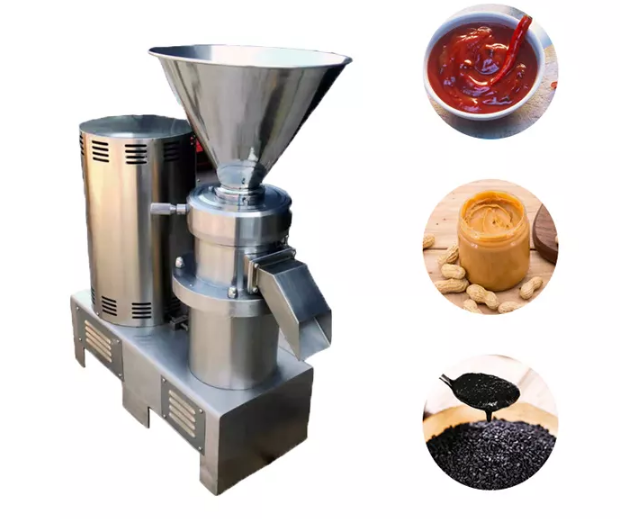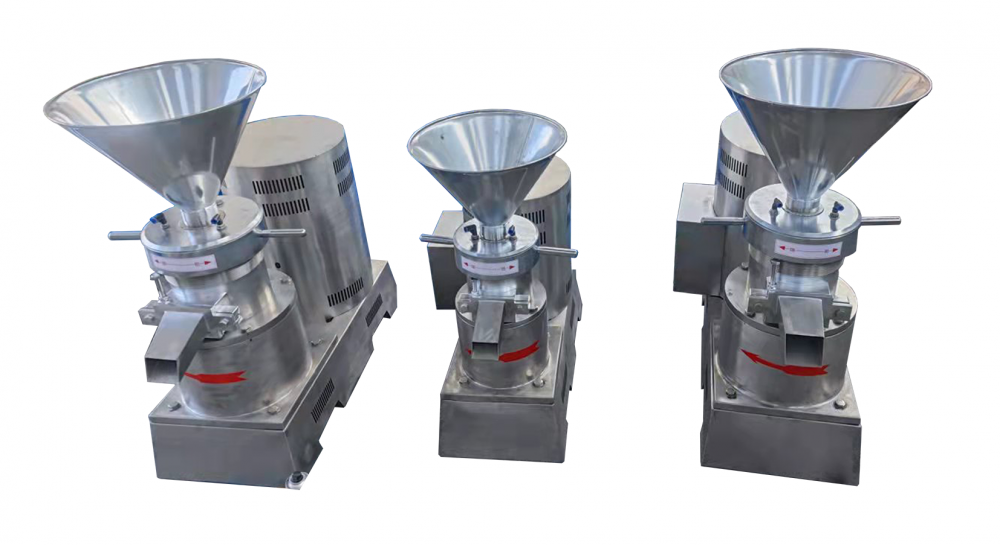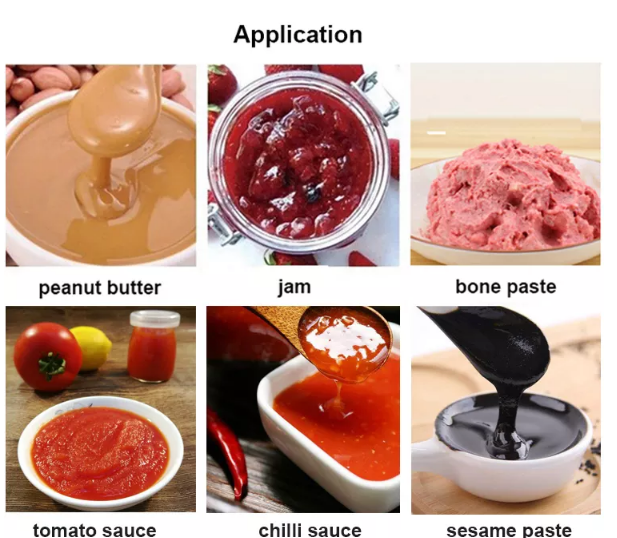1.MACHINE OVERIEW
Colloid mill is a kind of grinding equipment, integrated homogenizer, ball mill, blender and other mechanical functions, with ultra-micro grinding, emulsification, homogenization, mixing and other effects. After the material processing, the uniformity of more than 90%, particle size up to 2 ~ 50 micron, the parts are made of high quality stainless steel material, corrosion resistance, non-toxic, is the ideal equipment for ultra-fine particle processing
2.MAIN APPLICATION
1. Chemical industry: paints, pigments, dyes, coatings, lubricating oil, diesel oil, catalysts, emulsified asphalt, adhesives, detergents, etc.
2, Food industry: ice cream, moon cake stuffing, cream, jam, juice, soybeans, bean sauce, bean paste, peanut butter, cheese, dairy products, malted milk, all kinds of drinks, etc.
3, Daily chemical industry: toothpaste, detergent, shoe oil, cosmetics, shower gel, soap, balsam, etc.
4, Biopharmaceutical: syrup, nutrition liquid, Chinese patent medicine, cream, cod liver oil, royal jelly, vaccines, oral liquid, static drops, etc.
3.FEATURES
This machine not only maintains the traditional colloid mill reasonable structure, simple operation, convenient maintenance, small volume, light weight characteristics, It also has the characteristics of wide adaptability, simple speed change, and can replace different types of motors for different processing objects.
1, the main parts of the machine are made of stainless steel, corrosion resistant, non-toxic.
2, the main working part of the machine is divided into stator and rotor, excellent processing. The stator and rotor clearance can be micro - sized through the positioning disk adjustment, equipped with dial, easy to control, to ensure product processing quality.
3, according to different uses, can choose different materials of stator and rotor, convenient disassembly.
4, the speed of the machine can be adjusted, the user can order the appropriate speed from our unit according to the material processing situation
In addition we also have other machines for u chosoe,such as spices Powder Pulverizer ,powder mixer,Capsule Filling Machine,capsule Polishing Machine,Capsule Counting Machine,tablet press,vacuum dryer etc
Essence Colloid Mill for Food,Fragrant Emulsified Pig Skin Colloid Mill,Peanut Milk Colloid Mill,Syrup Colloid Mill for Medicine,Proprietary Chinese Medicine. Colloid Mill,Ice Cream Colloid Mill for Food Jiangyin yongchang medicine machinery co,.ltd , https://www.jyycgrinderline.com
Through the soil tester, significant spatial variation in soil organic matter content, available P content, and total N content were found in the study area. Under large scale, the spatial variability of soil nutrients was small, and the spatial variability was increased under medium and small scales. Under various scales, soil nutrients have a typical semi-variance structure. Under the large-to-medium scale, the nutrient nugget coefficient is 0.28-0.38, indicating that the soil nutrients have obvious spatial correlation; and at a small scale, the nugget coefficient is between Between 0 and 0.17, the soil nutrients have strong spatial autocorrelation, in which the organic matter content has a constant spatial autocorrelation (nugget coefficient is 0), and the spatial autocorrelation degree of the effective P content is relatively weak. With different sampling scales, the spatial autocorrelation distances of soil nutrients have different scales.
The results of spatial interpolation and cross-validation show that the spatial interpolation results of the spherical model are in good agreement with the measured results, and the interaction tests are extremely significant. Under a small scale, the estimation accuracy is higher than that under a large scale. The quality of spatial prediction of different nutrients was not the same, and the spatial prediction of soil organic matter content was the highest. This conclusion is the result of using the same spatial interpolation model for various soil nutrients. If different spatial interpolation models are used for selection, the conclusions may change.
Soil testers can measure the nutrient contents of soil samples taken at different scales. It can be found that geostatistical models are suitable for spatial analysis and prediction of soil nutrients at different scales. Therefore, geostatistics is an important tool for studying spatial variability of nutrients. It will play an important role in the spatial variation of soil nutrients, soil sampling capacity control, and precision/fine fertilization recommendations. The results of spatial prediction under the smaller scale than the large scale interpolation analysis are better, indicating that the geostatistical techniques have obvious advantages in nutrient variation and prediction in larger regions.



Precise fertilization of crops requires a certain analysis of the spatial variability of soil nutrients. For the time being, statistical and spatial interpolation methods are generally used to analyze the spatial variability of soil nutrients, but whether or not they are suitable in farmland still requires research. When large-scale (small-scale) spatial variability analysis is performed, small-scale variability is often overlooked. In the case of small-scale (large-scale) spatial variability analysis, large-scale variability are often weak and serve as “random variabilityâ€. Neglected or reduced dimensions, the study suggests that the spatial variation of soil nutrients on large scales is generally related to soil texture variation and topographic changes, while spatial variation on small scales is closely related to agricultural technology measures. The soil salt determination instrument is generally recommended to use a soil tester. The application of the instrument is very accurate, so it is worth promoting.